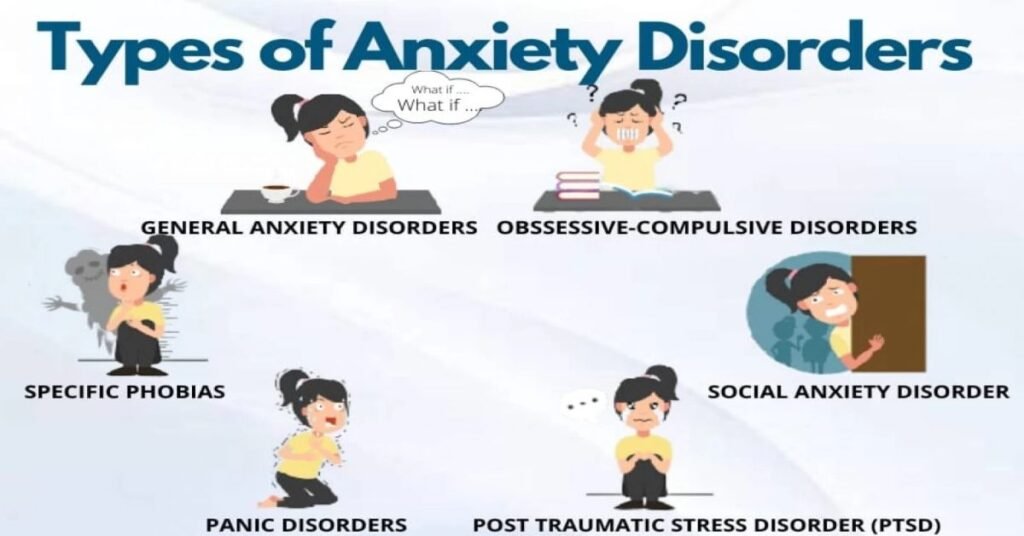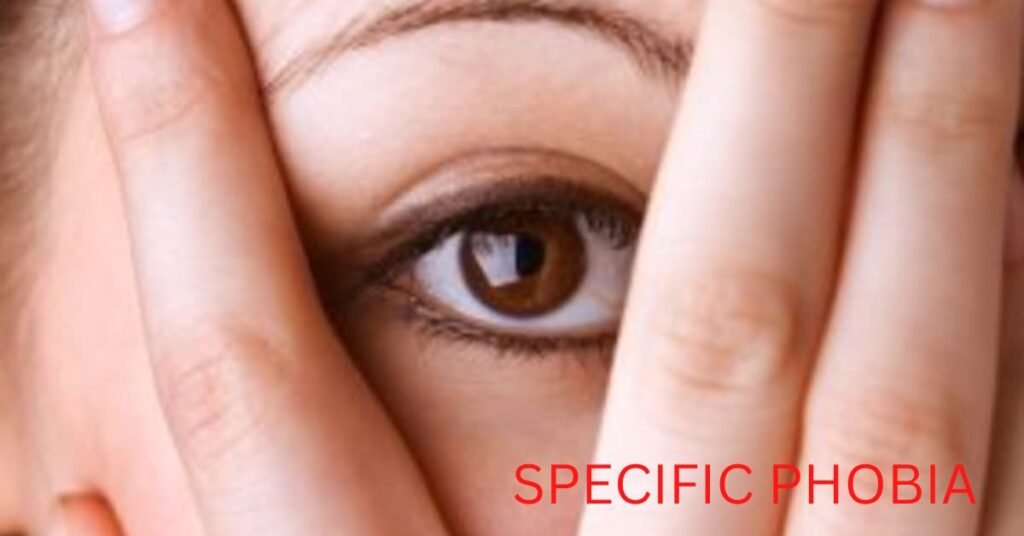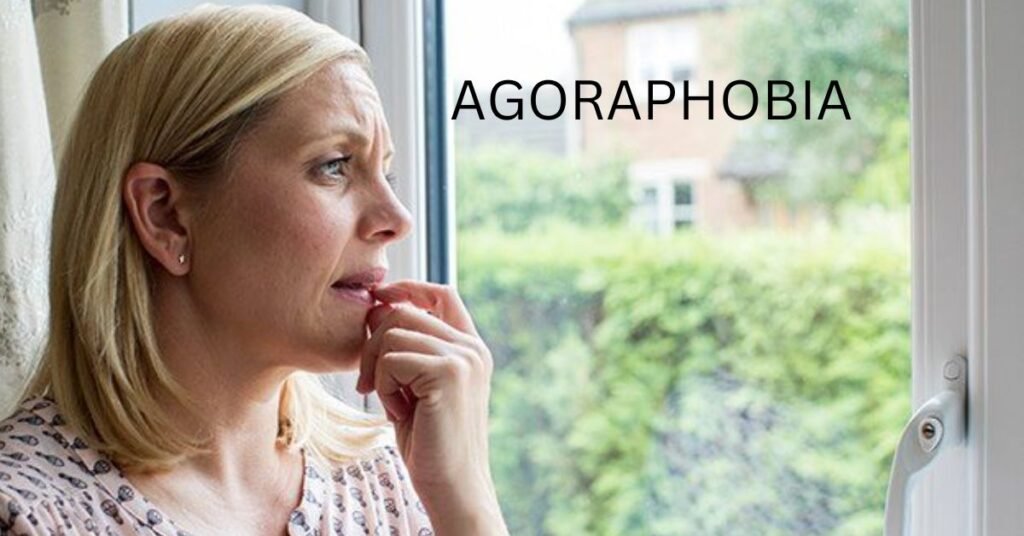what are the types of depression and anxiety?
Depression and anxiety are very common diseases nowadays. Every second person faces this disease anyway or somehow.
Depressive disorder is a mental health condition.
Depression is characterized by increased and continuous feelings of sadness or hopelessness.
The mental and emotional states of an individual, as well as his or her social behavior and physical health, can all be altered by depression.
Anxiety is a state of mind marked by worry or fear. It can be mild or very strong.
Everyone experiences worry and fear at some point in their daily life, for some reason.
To provide just a few examples, taking an exam, getting a medical exam, or going in for a job interview can all cause anxiety.

Types Of depression:
Mental and physical functioning can be impaired by depression.
There are a wide variety of depressions. In this case, some are common and others are uncommon.
Some types of depression are as follows:

1.Depression of the major kind (MDD):
Clinical depression, also known as major depression,
is characterized by extreme or disabling symptoms that remain for at least two weeks.
Everyday activities are affected by these symptoms.

2.Bipolar disorder in depression:
People with bipolar disorder have “manic episodes,” which are times when they are very happy and full of energy.
During this time, they may experience depression symptoms like sadness, hopelessness, and a lack of energy.

3.Postpartum depression:
Anxiety and sadness during pregnancy and the postpartum period,
are referred to as “perinatal” and “postpartum,” respectively.
Postpartum depression is a common term used to describe this condition.
Up to a year after giving birth, a new mother or father may experience perinatal depression.
The feelings of sadness, worry, or stress are more severe than those associated with “the baby blues.”

4.Persistent depressive disorder:
When compared to the symptoms of major depression, PDD symptoms are more manageable.
However, PDD symptoms typically last for two years or more in a person.

5.Premenstrual dysphoric disorder:
It usually strikes a woman a few days or weeks before her period.

6.Psychotic depression:
A delusion is an unfounded belief in something.
while to have a fever dream is to see, hear, or feel something that isn’t there.

7.Seasonal Affective disorder :
Depression that occurs only during certain times of the year is called seasonal affective disorder (SAD).
SAD typically begins in the late fall or early winter. In the warmer months of spring and summer, it typically disappears.

Types of anxiety:
Following are the types of anxiety, which are explained below:

1.Generalized Anxiety Disorder (GAD):
Physical symptoms such as restlessness, feeling on edge or easily fatigued,
difficulty concentrating, muscle tension, or sleep problems may accompany chronic worry and tension.
A lot of the time, people stress out about ordinary, everyday things like work, family,
and other mundane things like car trouble, missed appointments, and housework.

2.Panic Disorder:
In the course of an attack, you may experience a combination of the following:
- Feelings of a racing heart, palpitations, or other similar sensations
- Sweating
- Shaking or trembling
- feelings of suffocation or shortness of breath
- Intense discomfort in the chest
- Sensing of light head pain, nausea, or fainting
- Narrowing in the chest, or a sensation of suffocation
- A feeling of numbness or tingling
- Hot and cold flashes
- Illnesses like nausea and stomach pain
- Disassociated emotions
- Loss of control anxiety
- Having a dread of passing away
Many people who have panic attacks mistake the symptoms for a heart attack,
or some other possibly fatal health problem because of how intense they are.
They might check into the hospital’s emergency room.
Sometimes panic attacks are predictable, like when someone sees something they’re afraid of
and other times they seem to happen for no reason at all.
In most cases, people experience their first panic attack between the ages of 20 and 24.
Mood disorders like depression and post-traumatic stress disorder (PTSD) have been linked to panic attacks.

3.Specific Phobia:
Patients are aware of the illogical of their fears, but they are unable to control them.
Some people’s anxiety levels get so high that they’ll do anything to avoid facing their fears.
Some common phobias include those of public speaking, flying, and spiders.

4.Agoraphobia:
The fear of being in social situations where one feels trapped, embarrassed,
or where help may not be immediately accessible is at the heart of agoraphobia.
Irrational fear that lasts six months or longer and gets in the way of daily life is considered an anxiety disorder.
Two or more of the following trigger anxiety for someone with agoraphobia:
- To take the bus
- free and open environments
- Being Confined To A Small Space
- Waiting in line or amongst a large group of people
- Leaving the house by yourself
The person either avoids the situation altogether, feels the need for constant company,
or suffers through it with extreme nervousness or panic.
If left unchecked, agoraphobia can become so painful that the sufferer can no longer function in society.
Extreme distress or significant impairment in daily functioning are required for a diagnosis of agoraphobia.

4.Social anxiety disorder:
Those who suffer from this condition will either desperately try to escape the situation
or suffer through it in a state of deep fear.
Public speaking anxiety, social anxiety, and aversion to eating and drinking in public are all examples of social phobias.
For at least six months, this level of worry has made it difficult for you to go about your daily life.

5.Separation anxiety disorder:
A person with separation anxiety disorder suffers from an abnormally high level of distress.
when faced with the prospect of being separated from the people or things to which they are emotionally attached.
The emotion is out of proportion with the person’s age,
It lasts for an extended period of time (at least four weeks in children and six months in adults),
and it interferes with daily life.
A person with separation anxiety disorder may be afraid to leave the house or refuse to sleep without the person.
They feel closest to, as well as have recurring dreams about being separated from that person.
It’s not uncommon for children to start showing signs of distress in their bodies,
and those signs can continue into adulthood.
CONCLUSION:
Regular occurrence of depression is associated with a number of negative outcomes,
including pain, impaired functioning, a higher risk of suicide, higher medical expenses, and lost work time and income.
Depression can be treated well, whether it happens by itself or along with other health problems.
Humans regularly experience anxiety, which is a normal but highly individual emotion.
Fear and worry have their place in our lives, and healthy anxiety helps us adapt,
but for millions of people, fear and worry are a daily source of misery.







